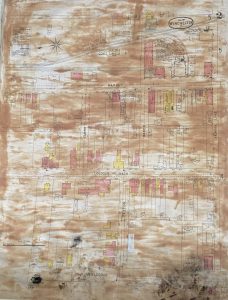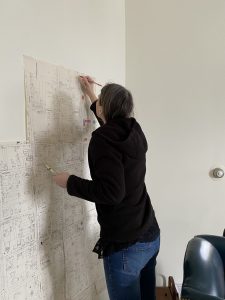While the PHW office is closed for the holiday, we still have a few bits of reading for you to enjoy over your weekend.
Are you wondering what historic preservationists do? Jeremy Wells created a short document detailing his findings of what career paths historic preservation training might lead to. If you are curious about working at a place like PHW, staff here would have to be versed in every one of his points as we are often the first line of contact on a variety of topics, but we work most with the “regulatory compliance” and “historic site” categories. While working as a single staff-person is challenging, it can also be incredibly rewarding if you enjoy learning new skills to expand your resume. You can also check out the blog post at the National Trust and the continuing discussion on the Forum for other perspectives on working in this field. Several comments point out how student interns are often looking for research opportunities. If you are a student looking to get experience typical of historic preservation fields in a self-directed format, PHW may be a great option for you. We would love more in-depth deed/will/tax record research for some of our historic district properties. While hunting down a chain of owners might seem inconsequential when you are in the midst of it, putting the chain together has helped countless people who needed a starting point for future research. Keep that in mind if you are a student needing some hours and wanting a nice point on future resumes!
While looking into the history of the John Mann Church on East Cork Street, we found a small article from 1914 on the parsonage, called “Pastor Too Tall for Parsonage.” We’re not sure from this little article if they were able to raise the roof 313 South Kent Street for their pastor, but if so, finding an article like this is a nice historic documentation of a change to the building and the reasoning behind it.
In many of the discussions around new construction in the historic district, we’ve seen a trend towards “all or nothing” thinking, with no medium option on the table. If you’re wondering why, you might be interested in “The Death of the Suburban Fourplex” at Strong Towns. While it focuses on Michigan, it is a great overview of how the fourplex (a building constructed to resemble a suburban split level but with four housing units) rose to prominence, became loathed, and were zoned out of existence.
Last, and most important, there are some proposed changes to the National Register process that are extremely troubling. In essence, large landowners input would be weighted more heavily than individual property owners, federal agencies would have unprecedented “pocket veto” powers on nominations, and Section 106 review would be stripped from certain properties. We suggest reading “Dire Consequences for the National Register,” “Proposed Rule Changes to National Register of Historic Places Nominations,” and “Proposed Regulations on the Listing of Properties in the National Register of Historic Places” and making comments on the proposal before April 30. Several of the links will take you directly to forms where you can submit comments online or provide the address for physical letters to be delivered. Most of our larger success stories of preservation in Winchester are because we have a National Register Historic District which enables the use of historic tax credits to make otherwise impossible preservation tasks attainable, like the George Washington Hotel and the Lewis Jones Knitting Mill. Millbank in Frederick County was spared from demolition in the 1980s in part because of the Section 106 review for mitigation on the Third Battle of Winchester. The original 1980 historic district listing also helped avert a potential insurance crisis for the Old Town area, thanks to the exemptions historic recognition can provide for historically flood-prone properties. We are also extremely troubled at the potential impacts on nominations for tribal lands. While we recognize this is not a likely impact for our area, you can find examples of how such proposed changes will produce a negative impact at Living Landscape Observer. Again, we hope that you will review the proposed changes and submit your comments before April 30.




